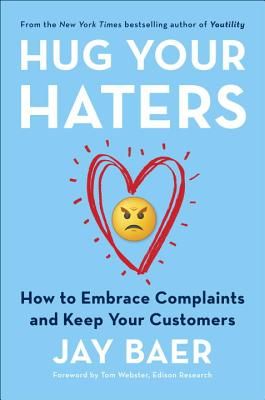Home
Customer-Centric Cost Reduction: How to invest and improve profits without sacrificing your customers
Loading Inventory...
Barnes and Noble
Customer-Centric Cost Reduction: How to invest and improve profits without sacrificing your customers
Current price: $15.99


Barnes and Noble
Customer-Centric Cost Reduction: How to invest and improve profits without sacrificing your customers
Current price: $15.99
Loading Inventory...
Size: OS
*Product Information may vary - to confirm product availability, pricing, and additional information please contact Barnes and Noble
Reduce costs
and
keep all your customers. It
is
possible!We will show you how.You want your company to perform better. You want to reduce costs. You may even be desperate to reduce costs. But when you reduce costs, customers feel it, right? If you cut costs and lose customers, you will need to cut costs again. And again. Soon there will be nothing left to cut. And no customers. I call this
the corporate death spiral
. I have seen it happen. You may have seen it happen. You may be going through it.
It does not have to be that way.
It does not matter whether you need to cut costs to have money to invest, or simply because you have a profit crunch. No matter what your reason, it can be done without negative customer impact. Some cost reductions may even improve things for customers, making them more loyal. But how?
Customer-centric Cost Reduction
is a simple but revolutionary concept. I explain how to accurately identify things of little importance to customers.
These are the cost reduction priorities
. For most companies, there are lots of them. They fall into just a few categories, each of which needs to be addressed in specific ways.Imagine a world where you reduce costs faster than your competitors. You wind up with more money to invest in growth than your competitors could ever dream of. You can fund your new ideas. Your competitors can't. This book explains how to do it.
It also explains how not to do it.
Here is the most common way companies reduce costs (Don't do this) Your CEO (let's call him Bob) is worried about cost. The board wants the share price to go up. He wants a bigger bonus. So do the others on the leadership team. Bob thinks of himself as a fair person. He wants his cost reduction to be seen as fair by everyone. Easy! Here is what he writes to all of the employees: "... and in the interest of fairness, I am asking every business and function in the company to reduce costs by 15%. It will be hard. We all need to work together to make it happen..." Let me be clear about this.
Bob is an idiot!
He makes no distinction between things that matter to customers and those that do not. This is how you start the corporate death spiral. This is how to go out of business.A real world example of how not to do it I remember walking along with the head of HP in EMEA. His phone rang. It was the CEO of a large Dutch multinational. He was not happy. They had outsourced their internal PC help desk to us. To reduce cost, we had eliminated Dutch as a supported language. Nobody had told the CEO. He had just phone the help desk. He got a nasty surprise. This did not turn out all that well for us. Enough said!
is both informative and entertaining. The methodology, anecdotes and examples are accompanied by my brother's memorable drawings that drive home many key points. I particularly like the one about the CEO announcing a company-wide travel freeze from the comfort of his corporate jet.
(Don't do this either!)
About the authors Maurice started his career with an Industrial Engineering degree and a stopwatch in his hand in a Wrangler clothing factory. He has implemented many major cost reduction initiatives for four multinationals right up to his time as VP of Customer Experience for HP Software. Peter is an artist, web designer, and Oxford-educated Doctor in Cognitive Psychology. The unusual combination of authors has produced a cost-reduction book that is unlike any other you will read. It combines current management thinking with behavioral economics theory and some striking illustrations.And in conclusion As we say in the book,
"There are just 3.5 ways of reducing cost."
You are just one or two clicks from finding out what they are. You know what to do now.
and
keep all your customers. It
is
possible!We will show you how.You want your company to perform better. You want to reduce costs. You may even be desperate to reduce costs. But when you reduce costs, customers feel it, right? If you cut costs and lose customers, you will need to cut costs again. And again. Soon there will be nothing left to cut. And no customers. I call this
the corporate death spiral
. I have seen it happen. You may have seen it happen. You may be going through it.
It does not have to be that way.
It does not matter whether you need to cut costs to have money to invest, or simply because you have a profit crunch. No matter what your reason, it can be done without negative customer impact. Some cost reductions may even improve things for customers, making them more loyal. But how?
Customer-centric Cost Reduction
is a simple but revolutionary concept. I explain how to accurately identify things of little importance to customers.
These are the cost reduction priorities
. For most companies, there are lots of them. They fall into just a few categories, each of which needs to be addressed in specific ways.Imagine a world where you reduce costs faster than your competitors. You wind up with more money to invest in growth than your competitors could ever dream of. You can fund your new ideas. Your competitors can't. This book explains how to do it.
It also explains how not to do it.
Here is the most common way companies reduce costs (Don't do this) Your CEO (let's call him Bob) is worried about cost. The board wants the share price to go up. He wants a bigger bonus. So do the others on the leadership team. Bob thinks of himself as a fair person. He wants his cost reduction to be seen as fair by everyone. Easy! Here is what he writes to all of the employees: "... and in the interest of fairness, I am asking every business and function in the company to reduce costs by 15%. It will be hard. We all need to work together to make it happen..." Let me be clear about this.
Bob is an idiot!
He makes no distinction between things that matter to customers and those that do not. This is how you start the corporate death spiral. This is how to go out of business.A real world example of how not to do it I remember walking along with the head of HP in EMEA. His phone rang. It was the CEO of a large Dutch multinational. He was not happy. They had outsourced their internal PC help desk to us. To reduce cost, we had eliminated Dutch as a supported language. Nobody had told the CEO. He had just phone the help desk. He got a nasty surprise. This did not turn out all that well for us. Enough said!
is both informative and entertaining. The methodology, anecdotes and examples are accompanied by my brother's memorable drawings that drive home many key points. I particularly like the one about the CEO announcing a company-wide travel freeze from the comfort of his corporate jet.
(Don't do this either!)
About the authors Maurice started his career with an Industrial Engineering degree and a stopwatch in his hand in a Wrangler clothing factory. He has implemented many major cost reduction initiatives for four multinationals right up to his time as VP of Customer Experience for HP Software. Peter is an artist, web designer, and Oxford-educated Doctor in Cognitive Psychology. The unusual combination of authors has produced a cost-reduction book that is unlike any other you will read. It combines current management thinking with behavioral economics theory and some striking illustrations.And in conclusion As we say in the book,
"There are just 3.5 ways of reducing cost."
You are just one or two clicks from finding out what they are. You know what to do now.


















